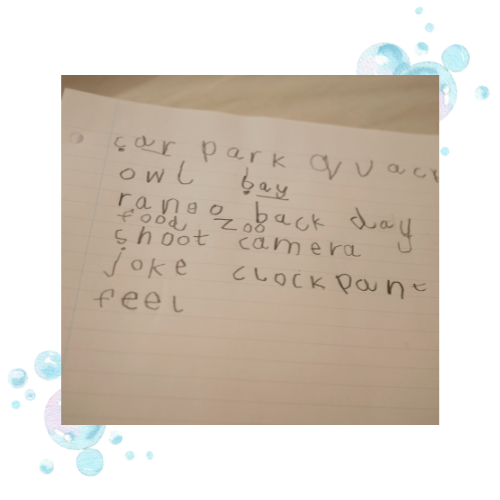Make Visual Motor Integration Skills Strong – 6 Fun Ways
Visual motor integration plays a large part in learning. It’s a bottom of the barrel type of skill – meaning it’s like the foundation of a house being built. Visual motor integration is a skill kids with dyslexia usually struggle with. It also plays a role in a child’s ability to read.

Dyslexia is a neurological condition that greatly affects a child’s ability to read, write, and spell. When thinking of dyslexia, most people get caught up with how these kids struggle to sound out words – how they stammer and stutter when reading. But this little known skill called visual motor integration plays a big role in reading abilities.
Visual motor integration is the ability to take in visual information and translate it into coordinated motor action. It involves the skill of using your eyes to guide your movements. Activities like catching a ball or writing on paper are examples of activities involving this skill. In essence, it’s the communication between the brain, the eyes, and the hands.
But wait…you might have made the connection that you don’t use and hands to read! That’s true most of the time! Although turning a page or following along with your finger involves the use of hands while reading. Even though you rarely use your hands for truly reading and decoding, visual motor integration plays a big part in reading. Kids with dyslexia make reading progress once visual motor integration skills are strong.
Understanding Visual Motor Integration
Dyslexia is characterized by difficulties with accurate or fluent word recognition, poor decoding abilities, and bad handwriting. In addition, children with dyslexia usually have messy schoolwork, unorganized writing abilities, and impaired spelling. Of course, a child might have only one of these deficits or all of them.

However, when trying to increase a dyslexic child’s ability to improve the above-mentioned skills, visual motor integration abilities must be addressed. These lower level skills play a huge role in a student’s ability to increase language-based abilities.
Visual motor integration involves interpreting visual information (what the eyes see) and using that information to execute precise motor actions. This skill is essential for tasks such as writing, copying shapes, or even catching a ball.
In the context of reading, visual motor integration involves tracking the eyes across text on a page. Recognizing letters and words is also involved. And finally, translating visual stimuli into meaningful information is necessary. A breakdown in this integration can hinder a child’s ability to decode text efficiently, leading to frustration and reduced academic performance.
The Connection Between Visual Motor Integration and Dyslexia
Dyslexia is commonly known to involve visual processing deficits. For years, it was thought that dyslexia was only a visual processing problem, but newer research recognizes the auditory component as well.

Because of visual deficits, kids with dyslexia fail to perceive subtle differences in letter shapes (e.g., “b” vs. “d”). This difficulty can be compounded by poor visual motor integration skills, as the child may have trouble translating these visual distinctions into corresponding linguistic sounds.
Eye movement and tracking abilities also play a huge part in the dyslexic child’s visual breakdown. Eye movements need to be smooth in order to read fluently. Kids need to follow lines of text without losing their place.
When they can do this, it results in stronger reading fluency and comprehension skills. But when visual motor integration skills are weak, readers can lose their place when reading, skip over words, or misread lines of text. This obviously disrupts fluency and comprehension.
In addition, visual motor integration skills significantly impact a child’s ability to spell words. A child must be able to perceive and replicate letter shapes, sizes, and spatial arrangements on paper. If visual motor integration skills are poor, it can lead to spelling difficulties like reversing letters and putting the wrong letters in word position.
The Language Connection
Reading, writing, and spelling are all language-based skills and highly interconnected. Children with weak visual motor integration skills may struggle with letter formation, spacing, and alignment, which leads to illegible handwriting.

Poor writing skills can exacerbate reading difficulties by making it harder for children to recognize their own written work or connect written letters with their sounds.
Most kids who are poor spellers are also poor readers and writers. Educators usually make the mistake of trying to fix all three areas at once. This only confuses and frustrates a child with dyslexia. Reading decoding skills need to be addressed first, as reading is the most important subject to master.
Once reading decoding abilities are somewhat strong, it’s important to fill in weak visual motor integration skills. This will help reading, writing, and spelling, as it is one of the lower level micro-skills necessary for all three larger abilities to become strong.
How Spatial Awareness Makes Reading Hard
Visual motor deficits can also affect spatial awareness, which is crucial for understanding how letters and words are arranged on a page. Dyslexic children with poor spatial awareness might reverse letters or confuse similarly shaped ones, further impairing their ability to decode text.

In addition, kids with dyslexia who also have spatial issues, might struggle to stay on the same line while reading. They also might jump to the next word while reading, which makes fluency and comprehension skills poor.
Spatial skills also play a huge part in visual discrimination abilities. This is how children detect subtle differences between shapes, letters, numbers, or words. A child with weak visual discrimination might read the letter “h” as the letter “n” because they look similar.
Kids with spatial skills issues might also have a difficult time interpreting text. They read words incorrectly, which changes the meaning of the sentence. And finally, children with poor spatial skills often fail to interpret spaces between letters or words. They might see them as all bunched together, combining two words into one.
Spatial awareness skills need to be addressed and strengthened if a child is to make progress in reading.
Evidence Linking Visual Motor Integration to Reading Challenges
Research has highlighted a strong correlation between visual motor integration and reading abilities in children.

Studies using tasks like the Beery-Buktenica Developmental Test of Visual-Motor Integration have shown that children with dyslexia often score lower in visual motor integration abilities compared to their typically developing peers.
Furthermore, interventions aimed at improving visual motor integration skills, such as tracing or copying exercises, have been shown to enhance reading performance, suggesting that strengthening visual motor integration skills can mitigate some of the challenges faced by dyslexic children.
The Broader Impact of Strengthening Visual Motor Integration Skills
Improving visual motor integration skills not only enhances reading abilities but also benefits other areas of development.

For instance, better handwriting and spatial skills can boost self-confidence and reduce frustration in academic tasks. Additionally, the skills gained from these interventions often transfer to other activities, such as sports or art, fostering a well-rounded and happy child.
While the connection between visual motor integration and reading is well-documented, it is essential to recognize that dyslexia is a multifaceted condition. Not all dyslexic children will exhibit significant visual motor integration deficits. Because of this, interventions should be individualized based on each child’s unique strengths and challenges.
Below are some strategies to help your child improve visual motor integration skills to help make reading, writing, and spelling skills strong.
Bravo! Briefs: 6 Ways To Make Visual Motor Integration Skills Stronger

- Programs like The Bravo! Reading Program emphasize movement-based learning, which can help integrate visual and motor systems.
- Eye tracking exercises improve reading abilities by strengthening eye muscles. You can have your child follow a slowly moving object, such as a colored sticker on a tongue depressor with the eyes. Additionally, a reading guide strip can help your child develop smoother and more coordinated eye movements. If you can’t find one, you can simply cut out a narrow window on a recipe card and have your child use it when reading.
- Activities that strengthen fine motor skills, such as coloring within lines, cutting with scissors, or assembling puzzles, can improve the precision of motor actions, indirectly benefiting handwriting and letter formation. These skills will indirectly help reading abilities as well.
- Spatial awareness games like “Simon Says” or using manipulatives like building blocks can enhance spatial awareness, helping children understand the arrangement of letters and w and m.
- Writing very large, over-sized letters, shapes, and numbers on a chalkboard or whiteboard help these skills. By engaging the shoulder, the arm, and the hand at one time, the brain builds new neural pathways that translate to stronger reading, writing, and spelling skills.
- Origami and paper plane folding help visual motor integration skills by requiring kids to visually perceive and interpret instructions. From there, they have to translate those instructions into precise hand movements. This helps coordinate their vision and their fine motor skills together.
- Copying basic shapes such as circles, rectangles, squares and hearts helps immensely. Just make a shape on a piece of paper or white board. Have your child try to replicate the shape as closely as possible to size and shape.
